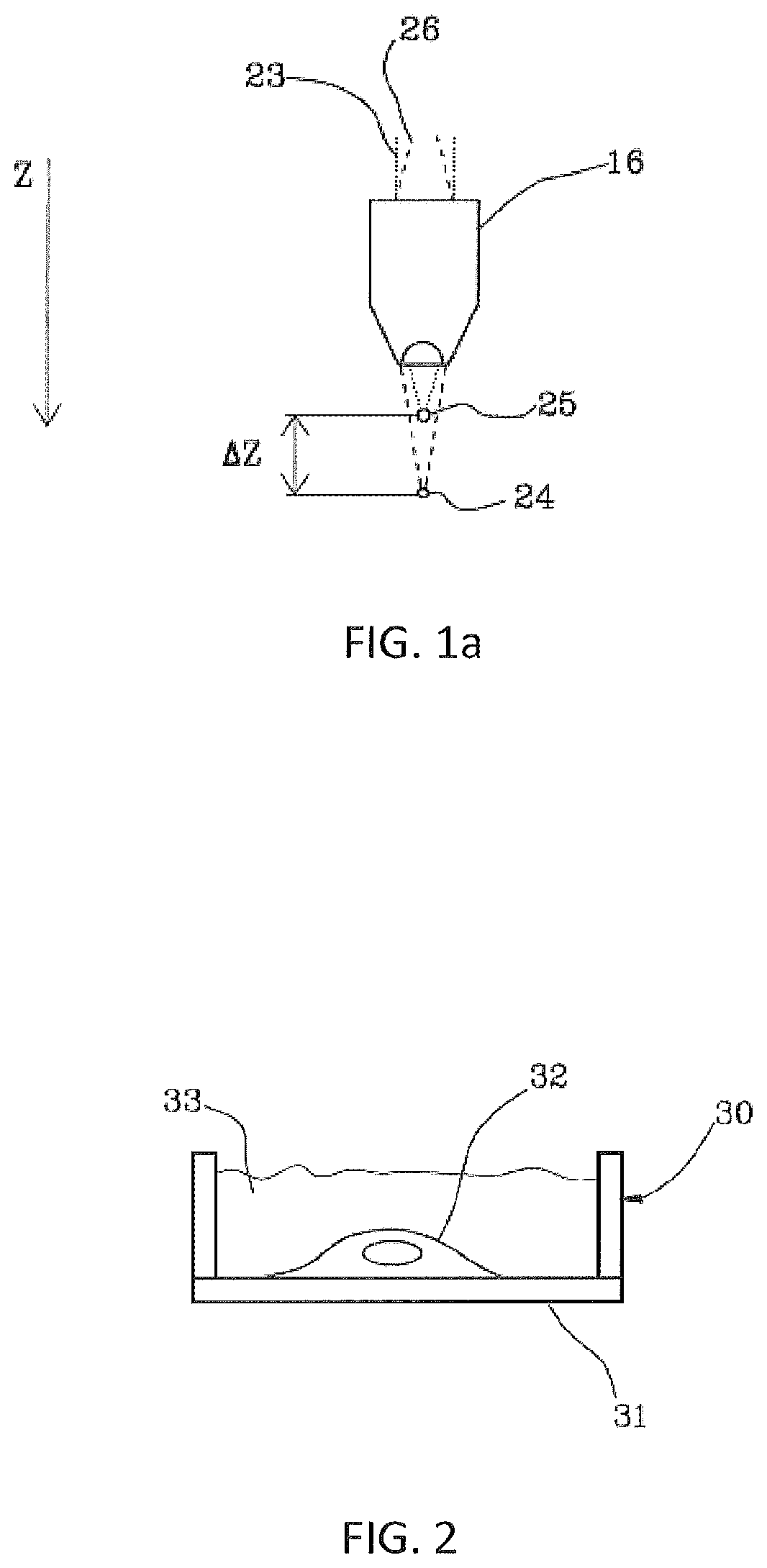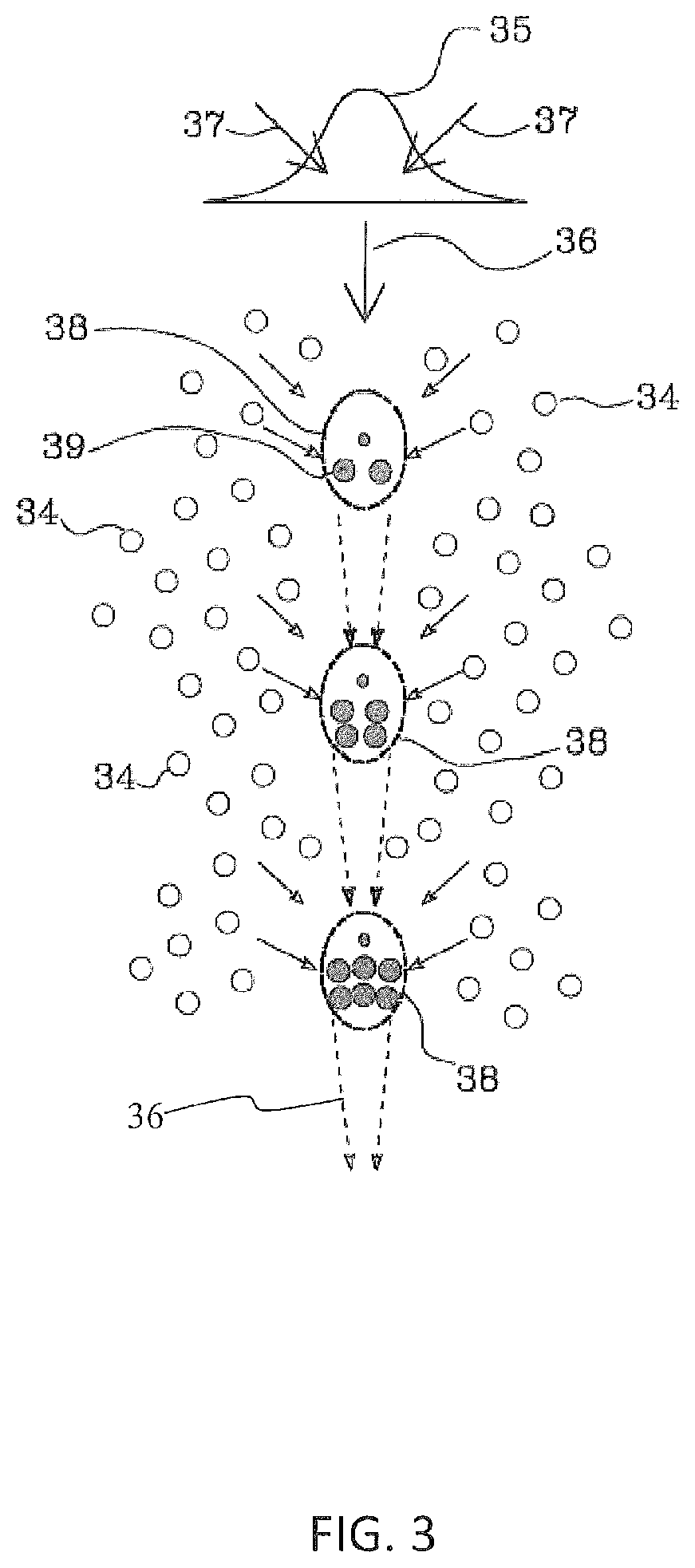Method for the optoinjection of exogenous material into a biological cell
a biological cell and exogenous material technology, applied in the field of optoinjection of exogenous material into biological cells, can solve the problems of inability to accurately position the focal spot of a laser beam on the cell membrane, affecting the synthesis of enzymology, and requiring laborious laser beam alignment,
- Summary
- Abstract
- Description
- Claims
- Application Information
AI Technical Summary
Benefits of technology
Problems solved by technology
Method used
Image
Examples
example
[0138]FIGS. 6a to 6f show a series of fluorescence microscope images captured before, during and after the optoinjection of a neuronal cell, respectively. Neuronal cells were incubated with a saline solution for cells containing fluorescent dyes FM1-43 in a glass Petri dish. The Petri dish had a base that was the substrate on which the cells, and in particular the recipient cell, were resting. Molecules FM1-43 are known to increase the quantum yield when they interact with the cell's membrane phospholipid layers, and it is therefore possible to detect the flow of the solution inside the cell when the membrane is pierced by the laser beam, since the molecules enter and interact with the membranes of the intracellular organelles. FIG. 6a is an image showing the target (recipient) cell highlighted by a contour indicated with an arrow, before the optoinjection. The white spots in FIG. 6a represent three dead cells that emit a fluorescent light saturated signal due to uncontrolled absorp...
PUM
| Property | Measurement | Unit |
|---|---|---|
| speed | aaaaa | aaaaa |
| size | aaaaa | aaaaa |
| size | aaaaa | aaaaa |
Abstract
Description
Claims
Application Information
 Login to View More
Login to View More - R&D
- Intellectual Property
- Life Sciences
- Materials
- Tech Scout
- Unparalleled Data Quality
- Higher Quality Content
- 60% Fewer Hallucinations
Browse by: Latest US Patents, China's latest patents, Technical Efficacy Thesaurus, Application Domain, Technology Topic, Popular Technical Reports.
© 2025 PatSnap. All rights reserved.Legal|Privacy policy|Modern Slavery Act Transparency Statement|Sitemap|About US| Contact US: help@patsnap.com



